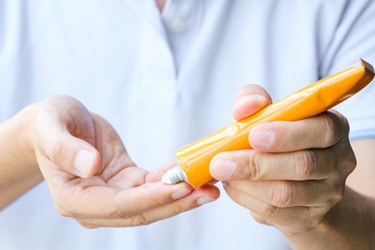Common Manufacturing Challenges For LBP Formulations
By Ashwin Sancheti, Ph.D., bioprocess engineer

Microorganisms have been an integral part of life on Earth, contributing significantly to the evolution and maintenance of biological systems. Humans have long recognized the health benefits of fermented foods, harnessing the power of microbes through a variety of traditional practices. This coexistence has led to mutualistic relationships between microbes and their hosts, where the microbial diversity is a characteristic feature of these relationships. However, modern lifestyle factors such as exposure to antibiotics, consumption of processed food, and environmental stress can disrupt this delicate balance, leading to a state known as dysbiosis.
The human skin microbiome plays a crucial role in maintaining the skin barrier and immune function. Dysbiosis of the skin microbiome is associated with severe dermatological conditions, including atopic dermatitis, acne, and psoriasis. LBPs aim to restore the balance either by fostering a healthy environment for the “good” microbes or by introducing “good” microbes from healthy individuals.
Live biotherapeutic products (LBPs) are a novel class of biologics that utilize stabilized live organisms for treatment or prevention of dysbiosis-related conditions. The hypothesis underpinning LBPs is that restoring microbial balance can mitigate or reverse the associated health conditions. While still a relatively new area of therapeutics, LBPs have shown promise in clinical trials across a range of applications, including gastrointestinal and dermatological disorders.
As the science of using LBPs has advanced, so have the processes for manufacturing and stabilizing LBPs. For topical applications, LBPs must be incorporated into topical formulations like creams, ointments, gels, or sprays. The challenge lies in maintaining microbial viability in these formulations, as live organisms must remain metabolically active to confer therapeutic benefits. Therefore, product stability is intrinsically linked to both upstream (e.g., fermentation and harvesting) and downstream (e.g., drying, formulation, and reconstitution) processes.
Traditionally, microbes have successfully been stabilized through cryopreservation, freeze drying, and spray drying; however, their incorporation in a suitable matrix for topical application is a relatively new advancement with unique challenges. This article explores some of the challenges and constraints in developing stable LBPs.
It Starts Upstream
The viability and stability of LBPs begins with the upstream manufacturing process. It is critical during the fermentation process to optimize media composition and operational parameters like pH, dissolved oxygen, and temperature to maximize cell density. Secondary metabolites produced during the growth could also play a functional role in the final product either by helping to stabilize the microbes or by being active post-biotics themselves. Advanced fermentation strategies like fed batch or biostat-controlled process that are well-established in the biotech industry can be employed to achieve higher biomass. The fermentation process can affect the output at a logarithmic scale, underscoring the need for tight integration between upstream process development and final product.
Followed By Stabilization Of The LBPs
Following fermentation, the next critical step is stabilizing the microbes in a dried state to extend their shelf life under refrigerated or ambient conditions. As a general idea, removal of moisture is correlated with improved shelf life. This can be achieved by employing lyophilization (freeze-drying) or spray drying.
Lyophilization corresponds to slow sublimation of frozen liquids under low temperature (-40°C to -10°C) and high vacuum (1-100 Pa).
Spray drying refers to the drying of liquid feed under relatively higher temperature (40°C to 80°C) and lower vacuum (0.1-5 MPa).
Dried microbes can then be rehydrated before use, providing a longer shelf life. The presence of cryoprotectants and osmo-protectants, along with the drying process used, determines the loss in processing and the stability of the dried mixtures. Sucrose, trehalose, inulin, skim milk, sorbitol, mannitol, and maltodextrin are some of the common cryoprotectants. The ratio of biomass to cryoprotectant is critical for the preservation of microbes. Cryoprotectants reduce crystal formation during the freezing process and thus prevent damage to cell membranes.
Then, Incorporation Into A Delivery Matrix
The stabilized dried powders are typically one part of the equation. For efficient delivery, be it oral or topical, these powders must be incorporated into a delivery matrix to ensure targeted delivery. Topical formulations are often aqueous, which can compromise the microbial stability. Non-aqueous formulations are typically better suited for topical application. The stability and shelf life of these formulations are critical to long-term success of probiotic products. The challenges with developing novel non-aqueous formulations that keep the microbes healthy while also preventing growth of other unwanted organisms have led to innovations in packaging technologies that allow for mixing of solid and liquid components of the mixture at the point of application.
The storage conditions for the dried powder can also affect the stability. Exposure to moisture can be detrimental to the stability of microbes and, thus, inert atmosphere (nitrogen or other) is frequently preferred in the headspace of the container. Owing to this sensitivity, novel packaging that allows for rapid reconstitution during application could be considered. Alternatively, encapsulated formulations that reduce the interaction of stabilized dried powder with the bulk matrix can be developed.
Aside from the challenges discussed above, the selection of microbes is paramount in the development of LBPs. Microbes must be carefully selected for therapeutic potential, safety profile, and manufacturability. Also, significant resources are needed to develop the manufacturing process of individual or consortia of microbes, which often have strict growth constraints, thereby requiring specialized fermentation processes.
Similarly, on the formulation side it is challenging to create user-friendly formulations that not only keep the active microbes safe and happy by reducing the preservatives but also reduce the chance of growth of other organisms. This focus on the active microbes also helps in developing cleaner formulations that are better by design.
Conclusion
Overall, LBPs present an exciting frontier in treating diseases at their root causes. There are challenges in manufacturing and testing of LBPs, which must be addressed systematically. Learnings from other products and industries can improve the development process and would need cross-collaboration between various industry experts. More importantly, it is critical to have a unified approach that can link the various steps in manufacturing, from strain selection to ensuring the stability of the final product. It requires synchronicity between teams across unit operations, supplemented by the use of advanced technology like artificial intelligence, to strengthen the relationship between upstream and downstream operations.
About The Author:
 Ashwin Sancheti, Ph.D., is a bioprocess process development and CMC engineer with more than a decade in biopharmaceutical manufacturing. His expertise includes upstream and downstream development, scale-up, and optimization of biological drug products, including live biotherapeutic products and postbiotics for clinical trials. His experience includes team leadership, managing partner relationships, and writing and reviewing the CMC sections of IND submissions. He received his Ph.D. in chemical and biomolecular engineering from the University of Akron.
Ashwin Sancheti, Ph.D., is a bioprocess process development and CMC engineer with more than a decade in biopharmaceutical manufacturing. His expertise includes upstream and downstream development, scale-up, and optimization of biological drug products, including live biotherapeutic products and postbiotics for clinical trials. His experience includes team leadership, managing partner relationships, and writing and reviewing the CMC sections of IND submissions. He received his Ph.D. in chemical and biomolecular engineering from the University of Akron.
